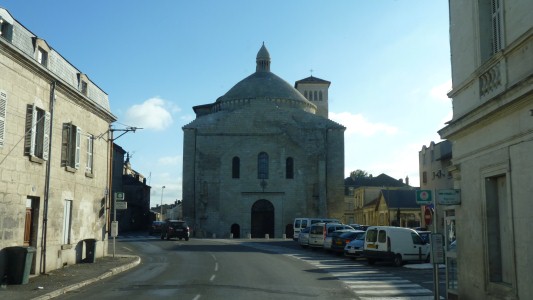
So much to see and so little time we carried on despite our relaxed state. Though the old town looked fascinating.
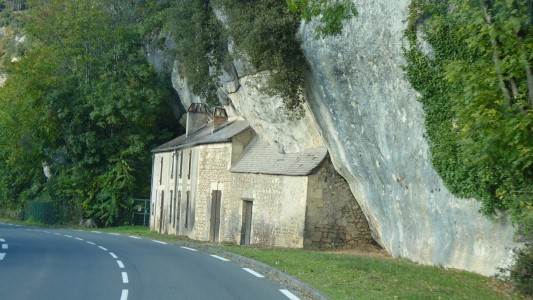
We're suckers for limestone.
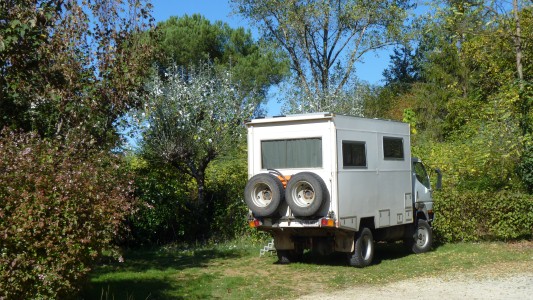
A bit of a tourist mecca in the summer season but relatively deserted at this time of year.
We were joined for the Saturday night by about 10 other motorhomes. They seem to arrive later than us, probably on short holidays, or just weekends, trying to make the best of available time.
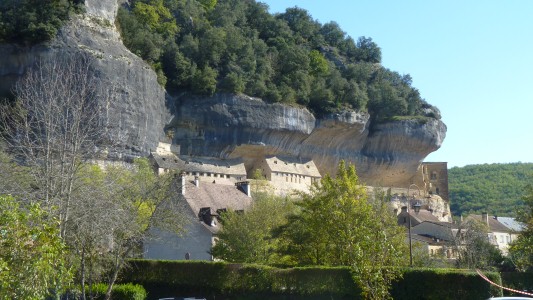
Lascaux and many other caves with rich ancient cave paintings are nearby.
Nestled under the overhang above Les Eyzies is the recent Musee National De Prehistoire.
We were last here in 1997 but the museum is new (2005) and the area has heaps to keep us interested.
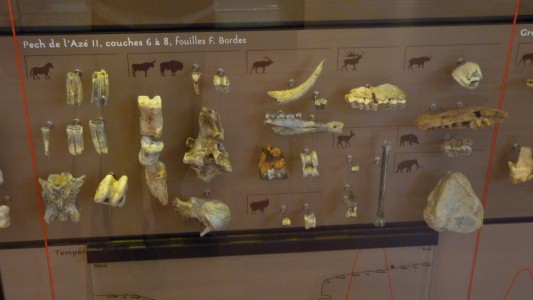
Nice to see the silhouettes of the animals alongside the bones. Thankyou curators!
The museum seems to be structured around human evolution and local animals, stone tools and how they were made, portable art and stone carvings with some mention of cave paintings.
Probably mistaken but missed "arrow heads" and how the stone tools may have been used.
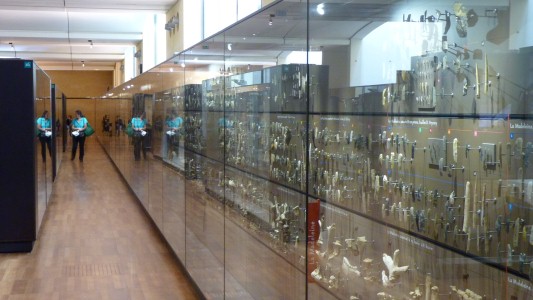
We couldn't help comparing this very extensive collection with the finds of Yuanmou Man we saw in China (6th July 2011). There's a copy of Lucy's skeleton in the foyer here - Australopithecus from Tanzania about 3,600,000 years BP with what in French, and the world map with dots, looks to us like an allusion to walking upright and "out of Africa". No mention here of Yuanmou Man (1,700,000 years BP) though Homo Erectus is in the timeline. No mention in either country of recent DNA research which suggests many more human ancestors and inter mixing than the "traditional" single ancestor analysis.
Since we visited Yuanmu Man we've learned more of hobbits, Denisovans, Neanderthals, and much interbreeding. Life is just one great voyage of discovery!
Thankfully (for us), in common with the Yuanmou Man Museum there is no mention of creationism.
And useless information for the day is that cro-magnon (from our school days) was just a general term for paleolithic hominids which has fallen into disuse as more detailed categories have been recognised. No doubt DNA research will change it all again.
And I'll continue to wonder whether the taxonomists needing more detail or the generalists will win the hominid classification battle.

Tools have also been categorised and dated meticulously. Numerous "how to" videos.
The Paleolithic has been separated into sub-periods which relate to local finds.
To put it into perspective the Paleolithic extends to 12,500 years BP. Mesolithic to 7,500 years BP and Neolithic to 4,300 years BP.
Henges, cairns, barrows and alignments we have seen have been mostly neolithic, occasionally mesolithic, and we are struggling to recall paleolithic sites we've visited.
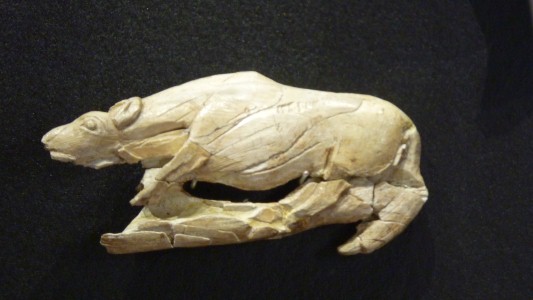
This is about 15,000 years old.
I often read that homo sapiens has more than 99% of our genes in common with chimps, or whatever life form is currently in vogue for comparison.
I also recently read (New Scientist 9 June 2012) that there are 15 million differences in the DNA of chimps and humans. Of which about 10,000 are perhaps significant, and maybe less than 10 give us our competitive edge.
So I guess we are all the same as far as the big things matter but different in the little things.
For example, I'm obviously human, but incapable of carving something like this, even given something to copy. I guess being artistic is a big little thing and not fundamental to survival.
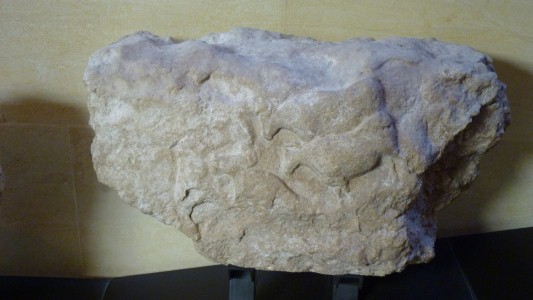
This rock carving in the museum is from around 20,000 years ago.
To our untrained eye the same animals as are seen in the cave paintings.
If we've translated our French correctly some of the carvings are possibly grave markers.
We have become used to engravings whereas this is in relief. And, to us, a more obvious representation. Very different.
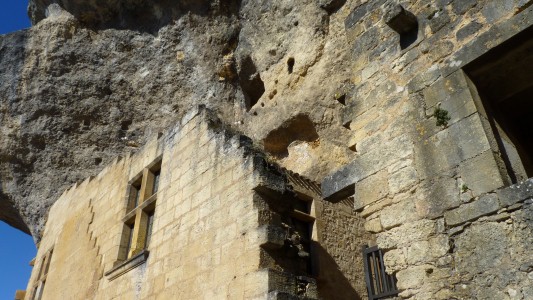
The same square holes cut for timber that we saw in the plank roads of China, though this time to support floors and roofs.
Strangely (to us) the museum had little on cave paintings. Perhaps because they are displayed in the caves and not to be transported. Or we missed it.
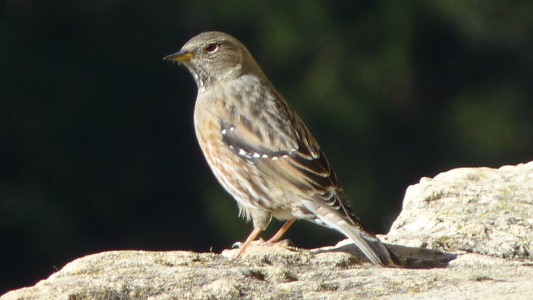
Perhaps not just an idle photo opportunity. We realised we didn't see any bird bones in the museum. Or plant remains.
We are more relaxed without visa deadlines, seasons, or truck repairs (touch wood) to get in our way. Time to think and reflect. And write long meandering blog entries.
We seem to have easily settled in to just "being in France".
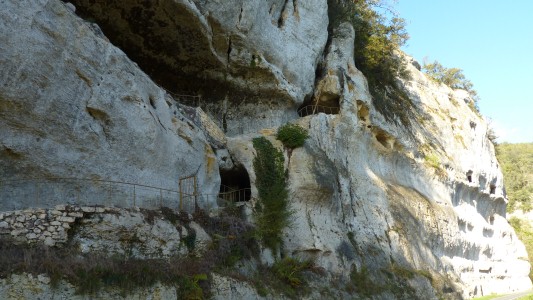
Around the Boucle de la Micoque.
A bit of not uncommon misunderstanding. Ali thought short meant a couple of km.
This terrace was unlabeled and closed. Just short of the Grotte du Grand Roc.
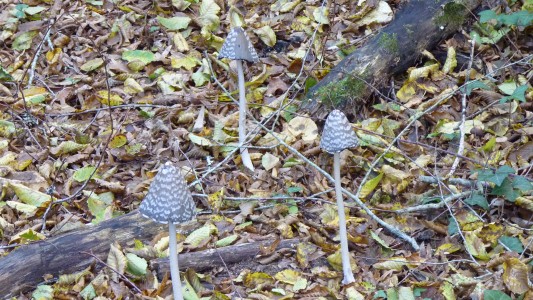
Even the fungi here look strange to us.
If only we knew which are the edible ones!
Perhaps we should join the Mycelia (?) Association of Perigord. We are in truffle country! These aren't truffles, and neither are the cêpes we saw at the local market.
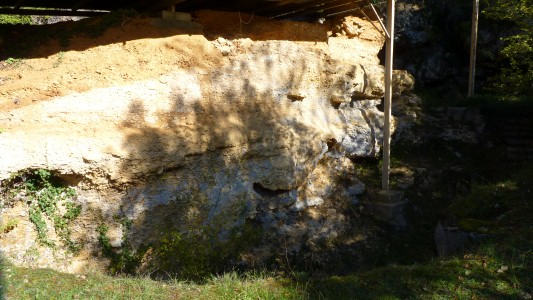
It took 300,000 years to accumulate 10m of sediment.
Our calculator reckons 30 years/mm ..... a tad slower than watching grass grow.
This is an important site as an almost complete record of the area and one of the first to be excavated.
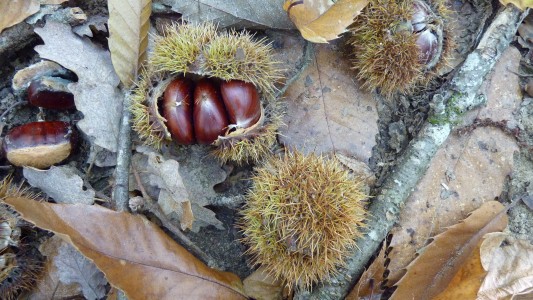
At least we know why conkers aren't round!
And kicking ourselves, they are sold in bags for €2 at the local produce market.
We could remind ourselves of Angela's soups.
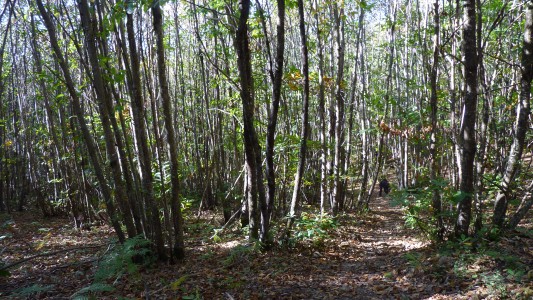
There's also blackthorn in the undergrowth. Same as what's in the hedges of Lincolnshire.
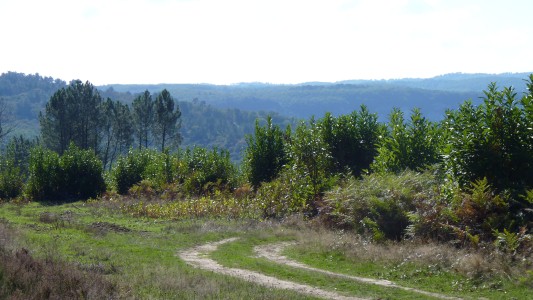
We'd noticed it as we followed small roads from Perigueux.
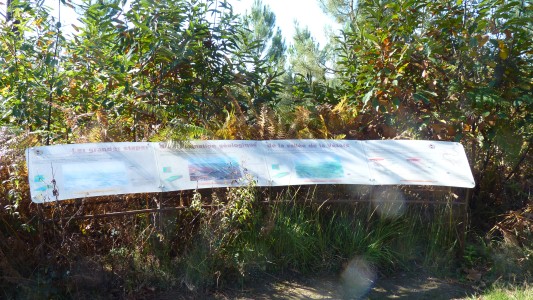
The view was blocked by the vegetation but the sign was useful.
About 85 mya (million years ago) until 65 mya, during the cretaceous period, this was a sea. Hence the deposits of limestone - a very rough calculation of perhaps fless than 50 years/mm.
About 4 mya it was still a plain with slow moving rivers depositing silt.
About 2 mya it was pushed up. The rivers ran faster and began to carve valleys.
From then on it was alternating ice and temperate ages which eroded the limestone to provide nice places to live.
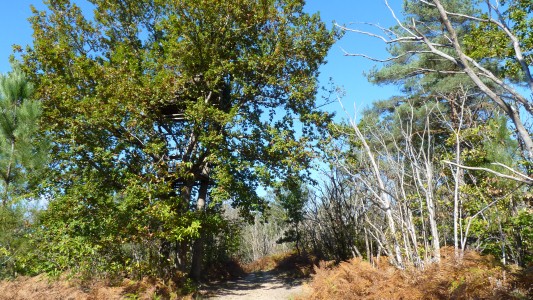
Inviting but looking a bit rickety. We failed the test and kept walking.
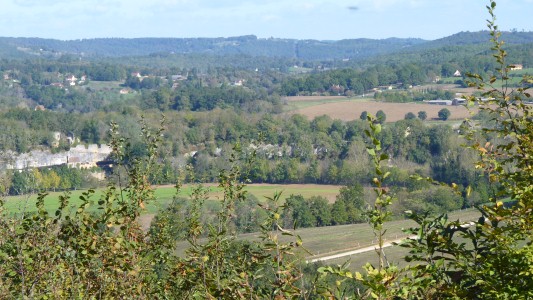
Its on the other side of the river. The roads look a bit small, and don't show on most of our maps.
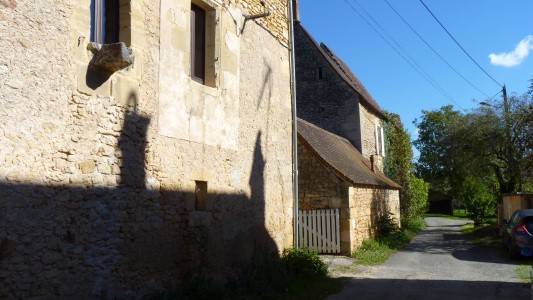
We were left wondering at the purpose of the rather large drain below the window.
And so back to Les Eyzies.
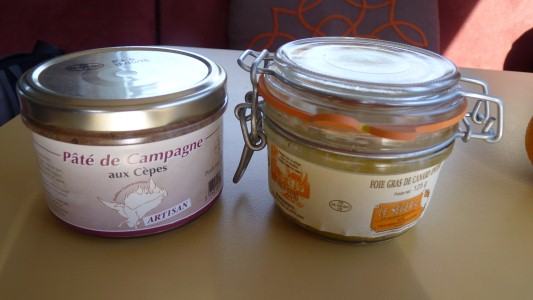
The jar on the right has a whole (entire) foie gras de canard - the liver of a duck (force) fed on grain. Not quite as delicate in taste as goose liver apparently.
We've put our judgements on animal farming ethics temporarily on hold. The brochures on foie gras production seem to be a bit sensitive or lacking in descriptions of feeding. Perhaps even an attempt to "greenify". Something that has been apparent throughout our trip has been the need to look past euphemistic marketing.
And on the left. Cêpes are fungi that look (to us) like big mushrooms. Cêpes were on sale for €24 /kg at the Monday local produce market. Alongside the chestnuts!
Ali has made a few patés at home.
Did I mention that our expanded lunch menu tastes good.